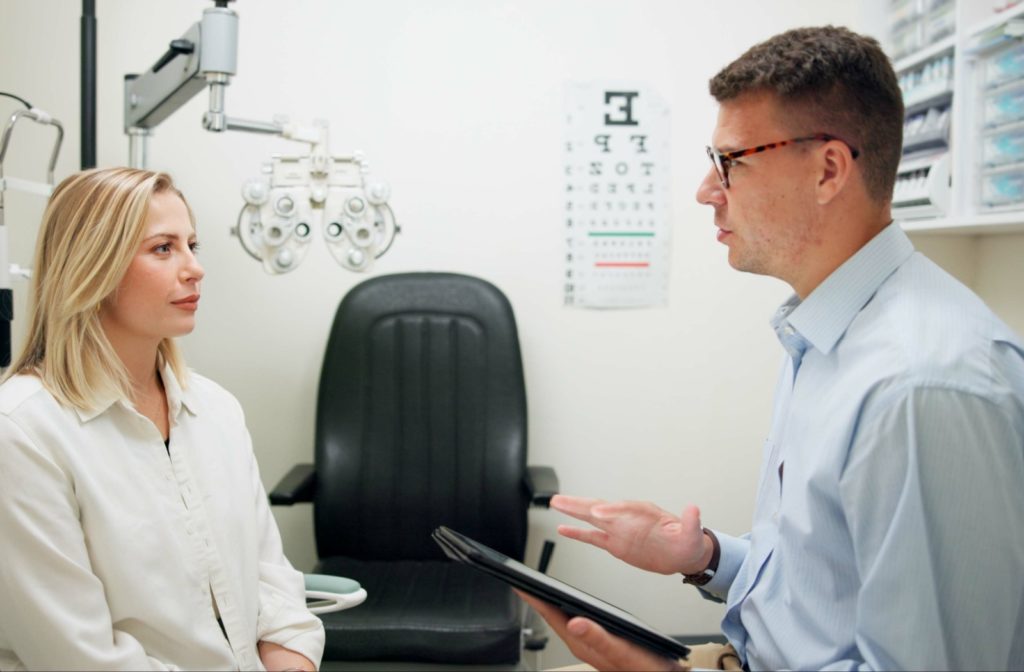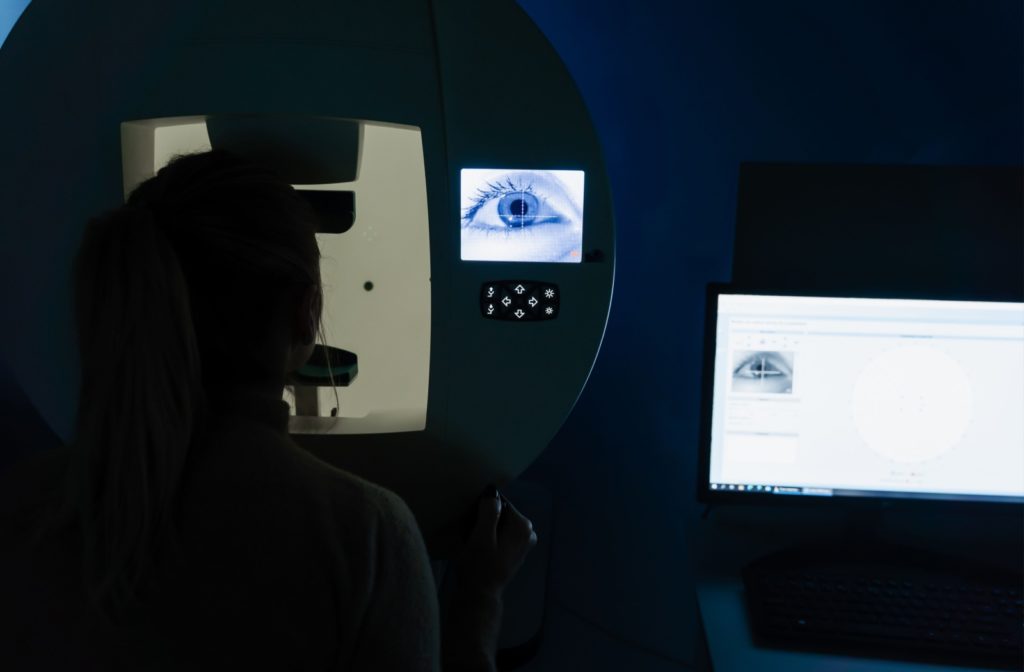A visual field eye test measures the range of your vision, including how much you can see in every direction while focusing on a single point. It’s commonly used to detect blind spots, assess peripheral vision, and identify any potential issues with your eyesight or neurological health.
By visiting your eye doctor and evaluating the functionality of both central and peripheral vision, this test provides valuable insights into overall visual health.
Understanding the Visual Field
The visual field represents the entire area you can see without moving your eyes, including what is directly in front of you and what you can perceive peripherally. It is divided into quadrants, each corresponding to specific areas of the retina and brain. This division makes it easier to identify which part of the visual system may be affected if abnormalities are present. Assessing the visual field is an essential tool for diagnosing and managing various eye and neurological conditions.
Why Visual Field Testing Matters
A visual field test is performed to:
- Detect blind spots: Blind spots, also known as scotomas, may indicate areas of vision loss that can interfere with daily life.
- Diagnose eye and neurological disorders: Conditions like glaucoma, retinal diseases, or optic nerve damage often manifest as changes in the visual field.
- Monitor progression: For individuals with diagnosed conditions, visual field testing can help track changes over time and assess how well treatments are working.
This type of test is crucial for identifying conditions that might otherwise go unnoticed in a routine eye exam.
Types of Visual Field Tests
There are different methods of conducting visual field tests, depending on the patient’s symptoms and the purpose of the evaluation:
- Confrontation visual field test: A basic screening where the patient focuses on a central point, and the examiner moves objects or fingers into their peripheral vision to detect blind spots.
- Automated perimetry: A more detailed test using a machine that presents light stimuli across the visual field. Patients indicate when they see these stimuli, creating a precise map of any vision loss.
- Amsler grid test: Primarily used to check central vision, this test involves viewing a grid to identify distortions or missing areas.
What Happens During a Visual Field Test?
The visual field test is a non-invasive procedure that involves several key steps. First, the patient is seated comfortably, and corrective lenses are provided if necessary. During the test, depending on the chosen method, patients may either respond to light stimuli or indicate when they perceive motion in their peripheral vision.
This entire process typically takes between 15 and 30 minutes and provides valuable insights into a person’s visual health.
When Should You Consider a Visual Field Test?
Visual field testing is not just for individuals experiencing advanced vision problems—it is also a key diagnostic tool for detecting early signs of conditions that may impact your sight. While anyone can benefit from this test as part of a routine eye exam, it is especially important for individuals experiencing specific symptoms or those with certain risk factors.
Consider scheduling a visual field test if you:
- Experience difficulty seeing objects in your peripheral vision: This can be an early indicator of conditions like glaucoma, which often begins with peripheral vision loss.
- Notice frequent tripping or bumping into objects: Reduced awareness of your surroundings can result from undetected blind spots or scotomas.
- Have unexplained vision changes: Sudden blind spots, dimmed vision, or difficulty focusing on specific areas in your field of view should be promptly evaluated.
- Are at risk for conditions like glaucoma or optic nerve disorders: Individuals with a family history of these conditions or other risk factors, such as diabetes or high blood pressure, may require regular testing to monitor their visual health.
It’s always better to address issues sooner rather than later, as this can significantly impact your ability to maintain long-term visual health.

Protecting Your Vision
Taking proactive steps to care for your eyes can help preserve the health of your visual field and lower the risk of vision loss over time. Regular eye exams play a critical role in this, as comprehensive tests—including visual field assessments—can detect potential problems early. Early detection allows for timely treatment, which is vital for preventing or slowing the progression of conditions like glaucoma.
Protecting your eyes from harmful UV rays is another key step. Exposure to UV rays can lead to conditions such as cataracts and macular degeneration, which may impact your visual field. Wearing sunglasses that block 100% of UV rays can greatly reduce this risk.
Additionally, if you notice any vision changes, such as blind spots, dimmed vision, or difficulty seeing objects in your peripheral vision, it’s important to report these symptoms to your eye care provider promptly.
Compassionate Eye Care at Total Vision Richmond
At Total Vision Richmond, formerly known as Richmond Vision Care, we pride ourselves on delivering family-focused eye care in the vibrant Richmond District of San Francisco.
We are committed to being part of your total vision journey, offering personalized care tailored to each family member’s unique needs. Schedule your appointment today and take the first step toward clearer, healthier vision.


